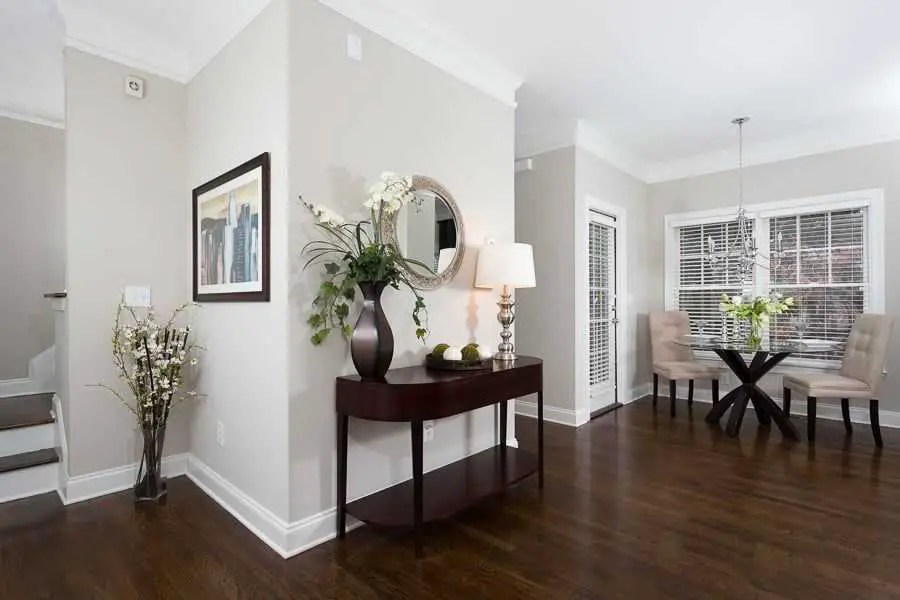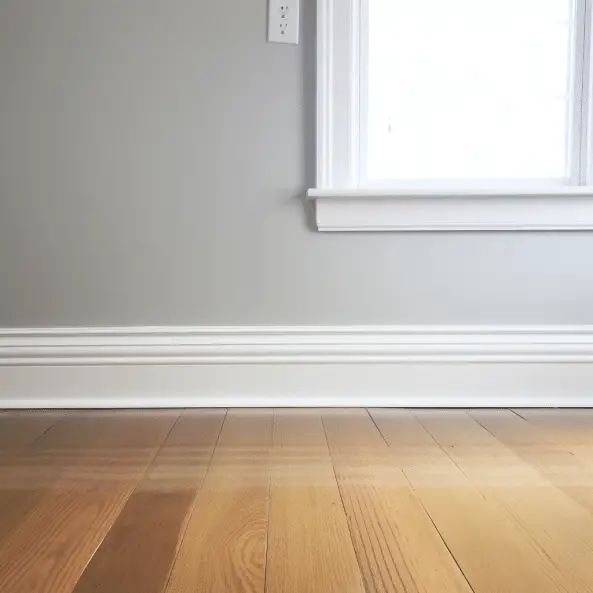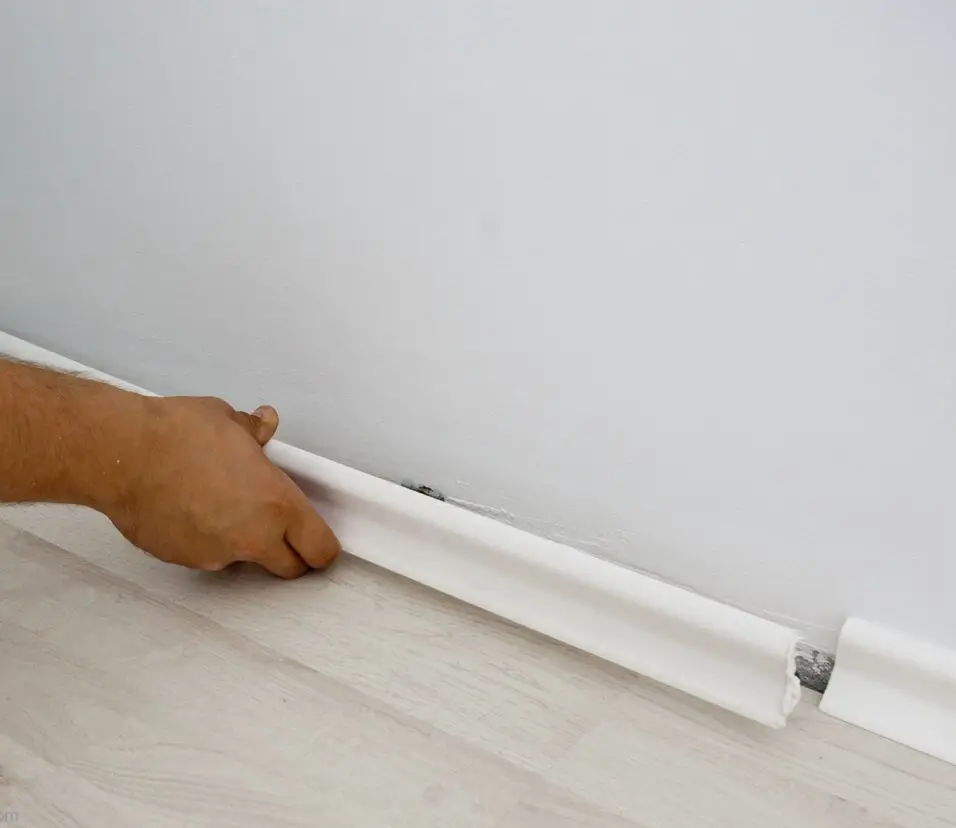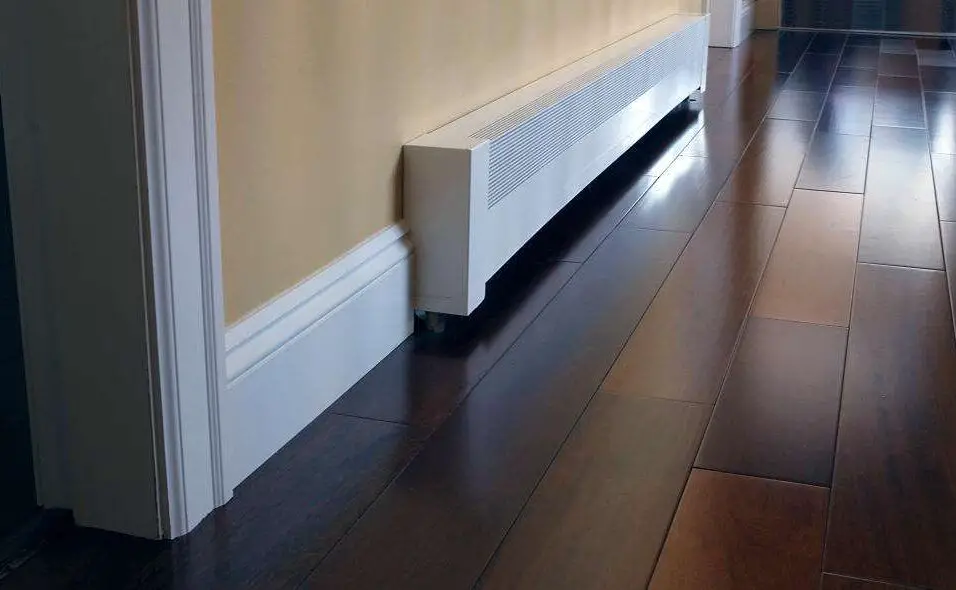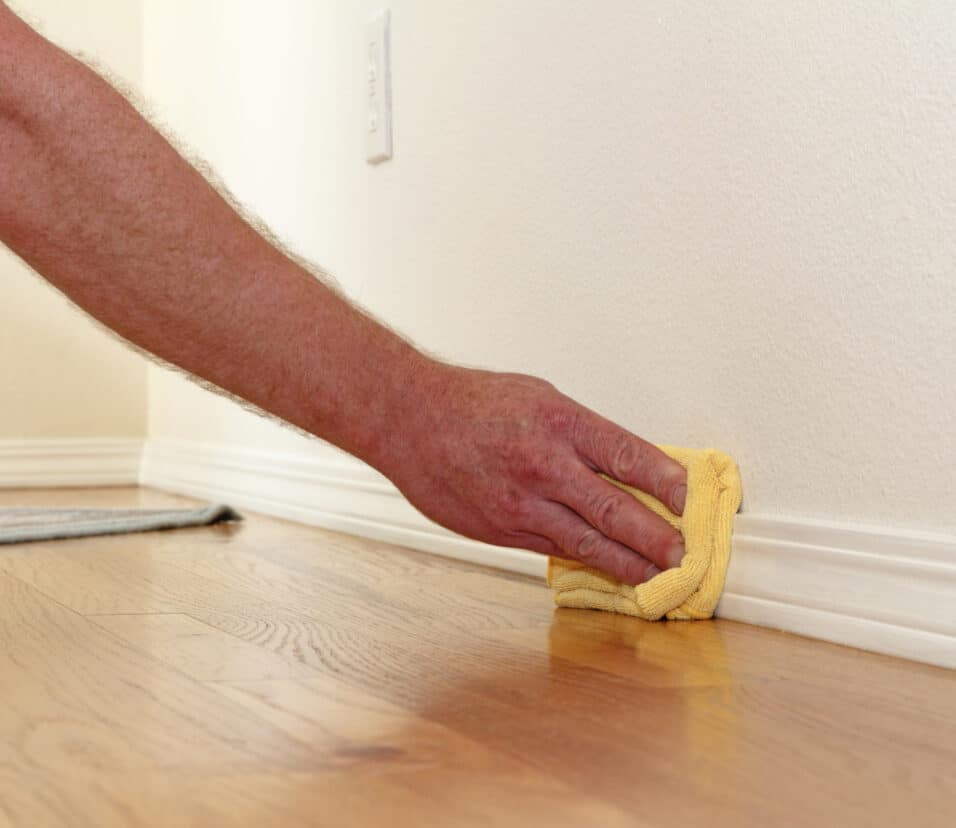Should Baseboards Be Same Color As Walls
Introduction
Should Baseboards Be Same Color As Walls: When it comes to interior design, every detail matters. From the color of the walls to the furniture arrangement, each element contributes to the overall aesthetic of a space. One aspect that often sparks debate among homeowners and designers is whether baseboards should be the same color as the walls. While some argue for a cohesive look, others believe that contrasting baseboards can add visual interest and depth to a room.
Proponents of matching baseboards and walls argue that it creates a seamless and harmonious appearance. By using the same color for both, the baseboards blend into the background, allowing other design elements to take center stage. This approach is particularly popular in modern and minimalist interiors, where simplicity and clean lines are key. When the baseboards are the same color as the walls, they become virtually invisible, creating an illusion of more space and a clutter-free environment.
On the other hand, those in favor of contrasting electric baseboards believe that it adds character and dimension to a room. By choosing a different color for the baseboards, they become a focal point and can help define the architectural features of a space. This approach is often seen in traditional or eclectic interiors, where the baseboards are painted in a darker shade to create a sense of depth and visual interest. Contrasting baseboards can also be used to highlight the flooring or draw attention to decorative elements in a room.
Ultimately, the decision of whether baseboards should be the same color as walls depends on the desired aesthetic and the overall style of the space. It is important to consider factors such as the size of the room, the color palette, and the architectural features when making this decision. Whether one chooses to match or contrast the baseboards, it is crucial to ensure that the final result is visually pleasing and enhances the overall design of the room.
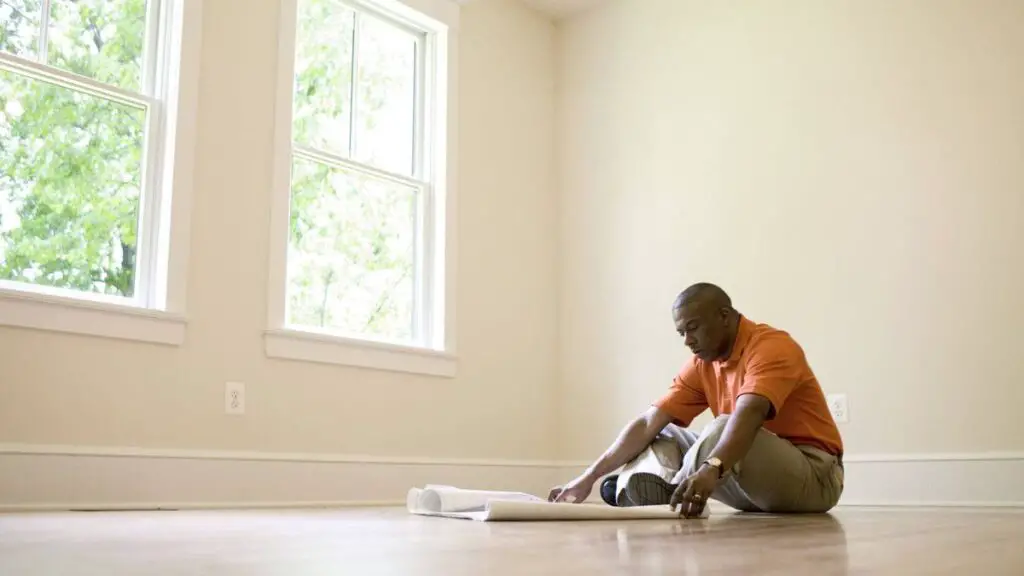
Should baseboards be lighter or darker than walls?
There are more colors for walls and trim than just white and bright walls. Paint trim and furniture darker than the walls to draw attention to window and door frames. Color lovers should choose a wall color that goes with the opposite color.
No one likes the same color border. Whether borders are lighter or darker than walls depends on the person, the design style, and the way the room looks. Baseboards that are lighter or darker will have different effects, so think about the room’s features and your goals.
It is possible for borders to be lighter than walls. A room can feel open and light. Lighter borders make walls look taller and rooms look bigger. In small rooms or rooms with low ceilings, the walls look bigger. Walls that are light make the edges look clean and smooth. This makes simple and modern style better.
Walls look better with darker borders. Baseboards that are darker make the walls look bigger. This makes the walls stand out in large or high-ceilinged rooms. Walls that are darker than the edges look classy. It can go with formal or classic style.
Baseboards that are lighter or darker depend on how the room is designed and how you want it to look. Think about the room’s size, roof height, amount of natural light, your own tastes, and the mood. You might find it helpful to look at room samples and try out different colors. Baseboards finish off a room and frame it, so color is important.
Should you paint your baseboards the same color as your wall?
You can hide ugly trim by painting the walls and trim. Painting the walls and trim the same color hides any fancy trim, giving the room a clean, modern look. This easy method will hide the trim.
There are several ways to paint baseboards. Make them match your walls by painting them that color. Having colorful borders makes a room look better. Putting the same color paint on the walls and baseboards?
Your style and how the room looks are important. Baseboards should be painted the same color as the walls to make the room look clean and bigger. This method makes walls look longer and more continuous in small rooms or rooms with low ceilings.
Based on color, rooms have depth and charm. This method brings out the features or trims in architecture. Baseboards in bright colors go well with these features and add warmth. Changing the color of the borders breaks up a big wall and makes a plain space look better.
Whether you paint your borders the same color as your walls or not depends on your style and the way you want the room to look. Style of home, room arrangement, and desired result are all important. Do different things until you get it right. For a change, paint can be taken off.
What color should baseboards be?
The classic color white goes well with ornate molding and trim. It might be the best choice because it looks great with white or bright walls.
Baseboard color is changed by many things. Baseboards finish off a room. The color of the baseboards has a big effect on how a room looks. Change the color of the baseboards. Borders that match the walls. The baseboards match. This works for quiet people. Baseboards and walls that match make a room look bigger because the colors don’t clash.
Different colored borders are liked by some. More clear and powerful. Black borders look great with light walls. To decorate, put up borders. When picking a border color, think about the style and theme of the room. Baseboards that are white or off-white are safe. It goes with many walls because it is classic and flexible. Baseboards that are black or dark make current styles stand out.
Baseboard color should be based on personal style and the look of the room. Color should improve the style and go with other parts of the room, whether the walls and baseboards match or are different.
Do you paint baseboards same white as walls?
Paint the walls and trim white to avoid conflict. Single-color space that is clean and even.
There are different ways to paint baseboards. Most of the time, people want borders to match their walls. There are no rules against it, but many people paint their borders the same color as their walls to make everything look the same. Paint the borders the same color as the walls to make the room look bigger and more connected. Less difference between the walls and baseboards makes the room feel bigger because the eye doesn’t have to go down. Fits into small places with low ceilings.
Different colored baseboards give a room more depth. Baseboards can bring out the best in bright wall colors. Baseboards make places with interesting architecture look better. When painting borders the same color as walls, think about how the room looks and how you want it to look. Baseboards and walls that are the same color make traditional or classic designs look timeless. Baseboards with different colors make modern or varied styles stand out. You can choose if borders should match the walls or not. Style, room size, and style are all things to think about. Make the place peaceful.
What color should baseboards be with white walls?
White walls with gray trim are a good compromise between white on white and aggressive. Gray comes in many shades, but this light one is relaxing and matches modern furniture.
Several factors determine white wall baseboard color. Baseboards must match white walls to look good. No rules, but some popular possibilities. Consider white baseboard. Baseboards match walls for consistency. Modern baseboards may match white walls. This suits minimalist or contemporary interiors that prioritize simplicity and consistency.
Contrasting baseboards are another option. On white walls, baseboards stand out. White walls with black baseboards are elegant. Suitable for formal settings. A color that matches the floor or furnishings is another. A unified effect is generated by matching baseboards. Dark hardwood flooring may need baseboards to match walls and floors.
The baseboard color with white walls depends on your taste and room style. Choose a color that enhances the overall aesthetic and complements the white walls, such as a white baseboard for a clean and modern look, a contrasting color for a more dramatic effect, or a color that matches other room features for a cohesive look. Rules should govern baseboard and wall colors for cohesion. Some recommend painting baseboards the same color as trim or molding. Baseboards match room architecture for consistency.
Another option is wall-matching baseboards. Baseboards may be hidden and other design details highlighted. Less wall-baseboard contrast opens up a room. Space aesthetics and design goals determine wall baseboard color. Rooms look uniform with matching baseboards.
Are there any design guidelines or principles that suggest matching the color of baseboards with the walls?
When it comes to design guidelines and principles, there is a general consensus that matching the color of baseboards with the walls can create a cohesive and visually pleasing look in a room. This approach is often recommended in traditional and classic interior design styles, where the goal is to create a sense of unity and harmony throughout the space.
By having baseboards in the same color as the walls, it helps to visually extend the walls and create a seamless transition between the two elements. This can make the room appear larger and more spacious, as there are no contrasting colors or lines that interrupt the flow of the space. Additionally, matching baseboards and walls can create a clean and elegant aesthetic, allowing other design elements such as furniture and artwork to take center stage.
Does having baseboards in the same color as the walls create a cohesive and seamless look in a room?
Having baseboards in the same color as the walls can indeed create a cohesive and seamless look in a room. When the baseboards blend seamlessly with the walls, it creates a sense of continuity and unity in the space. This can make the room feel more harmonious and visually pleasing.
By eliminating the contrast between the baseboards and the walls, the focus is shifted towards other design elements in the room, such as furniture, artwork, or architectural features. This can help create a more balanced and cohesive overall aesthetic.
Are there any advantages or disadvantages to having baseboards in a different color than the walls?
Having baseboards in a different color than the walls can offer several advantages and disadvantages. One advantage is that it can create visual interest and add depth to a room. By choosing a contrasting color for the baseboards, you can draw attention to this architectural element and make it stand out. This can be particularly effective in rooms with neutral or monochromatic color schemes, where the baseboards can serve as a focal point.
On the other hand, having baseboards in a different color than the walls can also have some disadvantages. One potential drawback is that it can make a room feel visually busy or disjointed if not done carefully. If the color contrast is too strong or if the baseboard color clashes with the overall color scheme of the room, it can create a jarring effect. Additionally, having baseboards in a different color may require more maintenance and touch-ups, as any scuffs or marks will be more noticeable.
How does the color of baseboards impact the overall aesthetic and visual appeal of a space?
The color of baseboards plays a crucial role in enhancing the overall aesthetic and visual appeal of a space. When chosen thoughtfully, it can create a harmonious and cohesive look that ties the room together. On the other hand, an inappropriate color choice can disrupt the flow and detract from the overall design.
One way in which the color of baseboards impacts the aesthetic is by creating contrast or blending in with the walls. If you want to create a seamless and understated look, opting for baseboards in the same color as the walls can achieve this effect. This approach works particularly well in smaller rooms or spaces with low ceilings, as it creates an illusion of continuity and makes the room appear larger.
However, using a different color for the baseboards can also have its advantages. It can add visual interest and create a focal point in the room. For example, if you have neutral-colored walls, using a contrasting color for the baseboards can draw attention to architectural details or highlight the craftsmanship of the baseboards themselves. Additionally, using a darker color for the baseboards can create a grounding effect and anchor the room, especially when paired with lighter-colored walls.

Conclusion
The question of whether baseboards should be the same color as walls is subjective and depends on personal preference and the overall design aesthetic of the space. While some may argue that matching baseboards and walls create a cohesive and seamless look, others may prefer the contrast and visual interest that comes with using different colors. Ultimately, the decision should be based on the desired effect and the specific characteristics of the room.
One argument in favor of matching baseboards and walls is that it creates a sense of continuity and unity in the space. When the baseboards blend seamlessly with the walls, they become less noticeable and allow other design elements to take center stage. This can be particularly beneficial in smaller rooms or spaces with intricate architectural details, as it helps to create a more cohesive and visually appealing environment.
On the other hand, using a contrasting same color for baseboards can add depth and dimension to a room. By choosing a different color, the baseboards become a focal point and can help to highlight architectural features or create visual interest. This approach is often used in modern or contemporary designs, where the goal is to create a bold and dramatic look.
Ultimately, the decision of whether baseboards should be the same color as walls is a matter of personal preference and the desired effect for the space. It is important to consider the overall design aesthetic, the size and characteristics of the room, and the desired visual impact. Whether one chooses to match the baseboards with the walls or use a contrasting color, the most important factor is to create a space that is visually appealing and reflects the individual’s personal style and taste.



